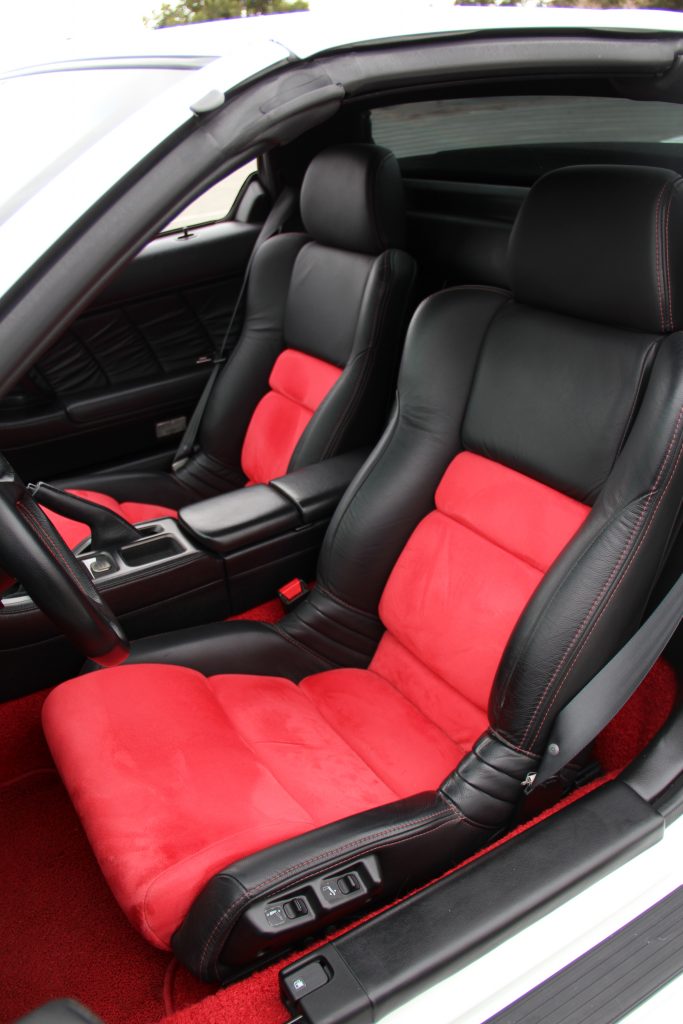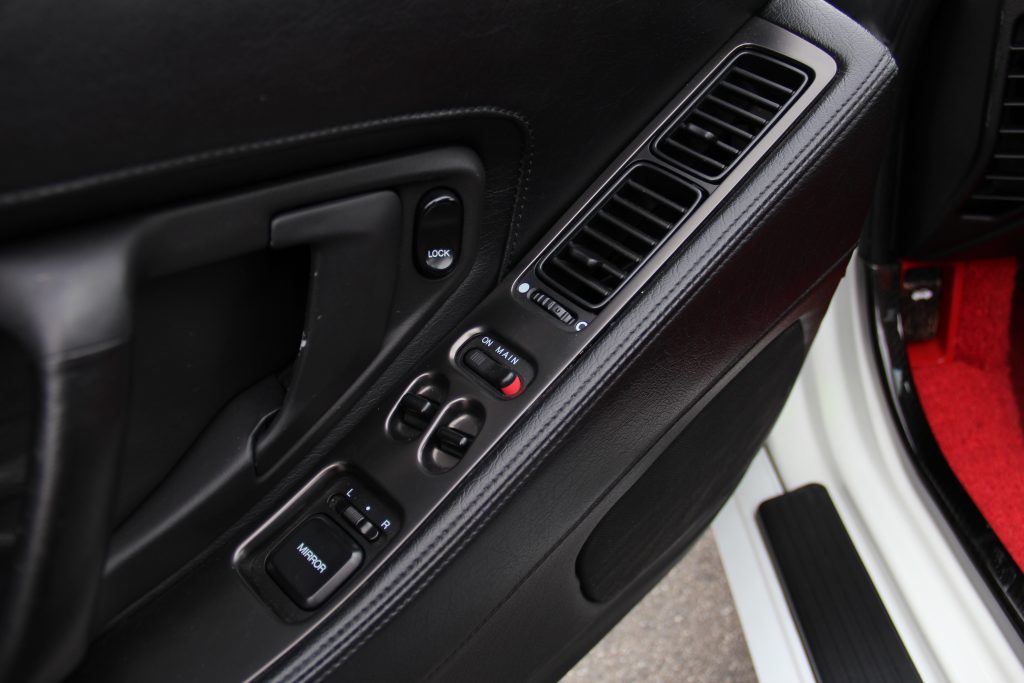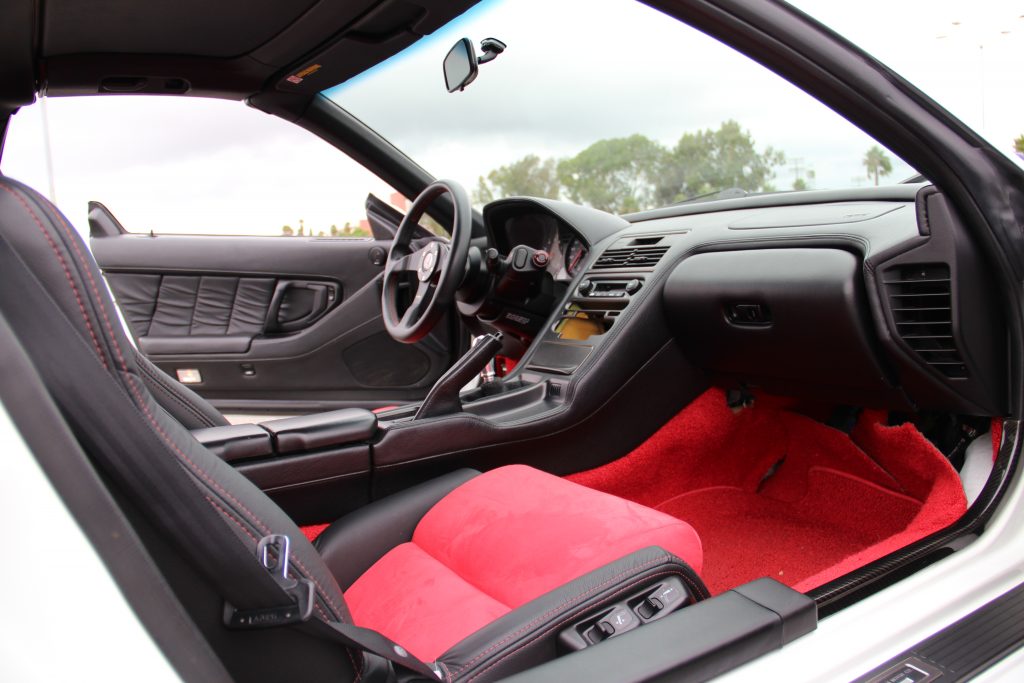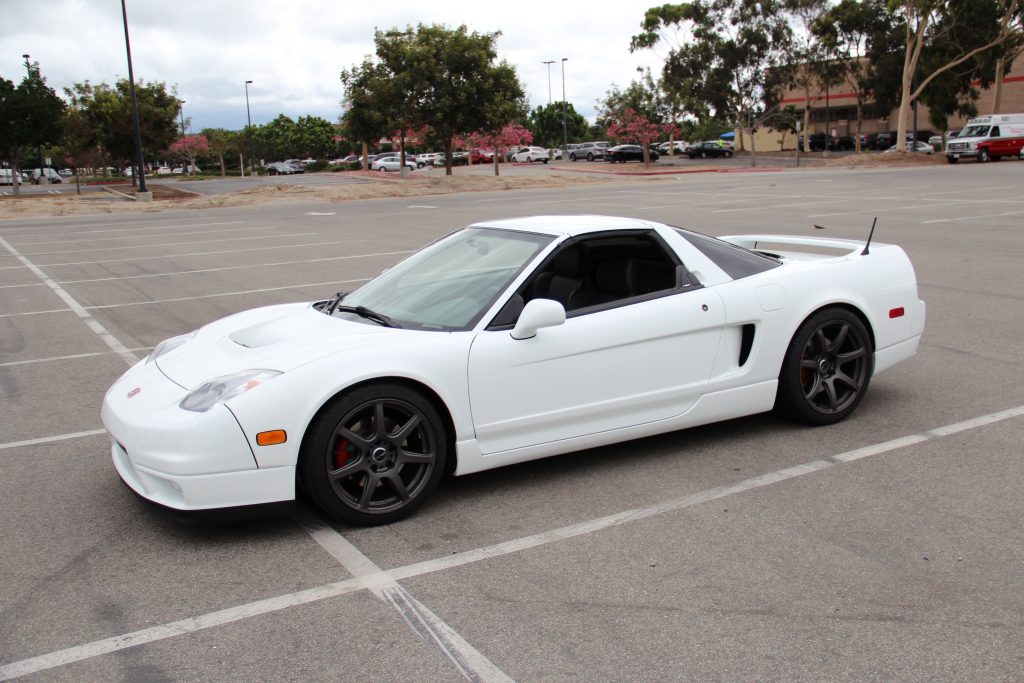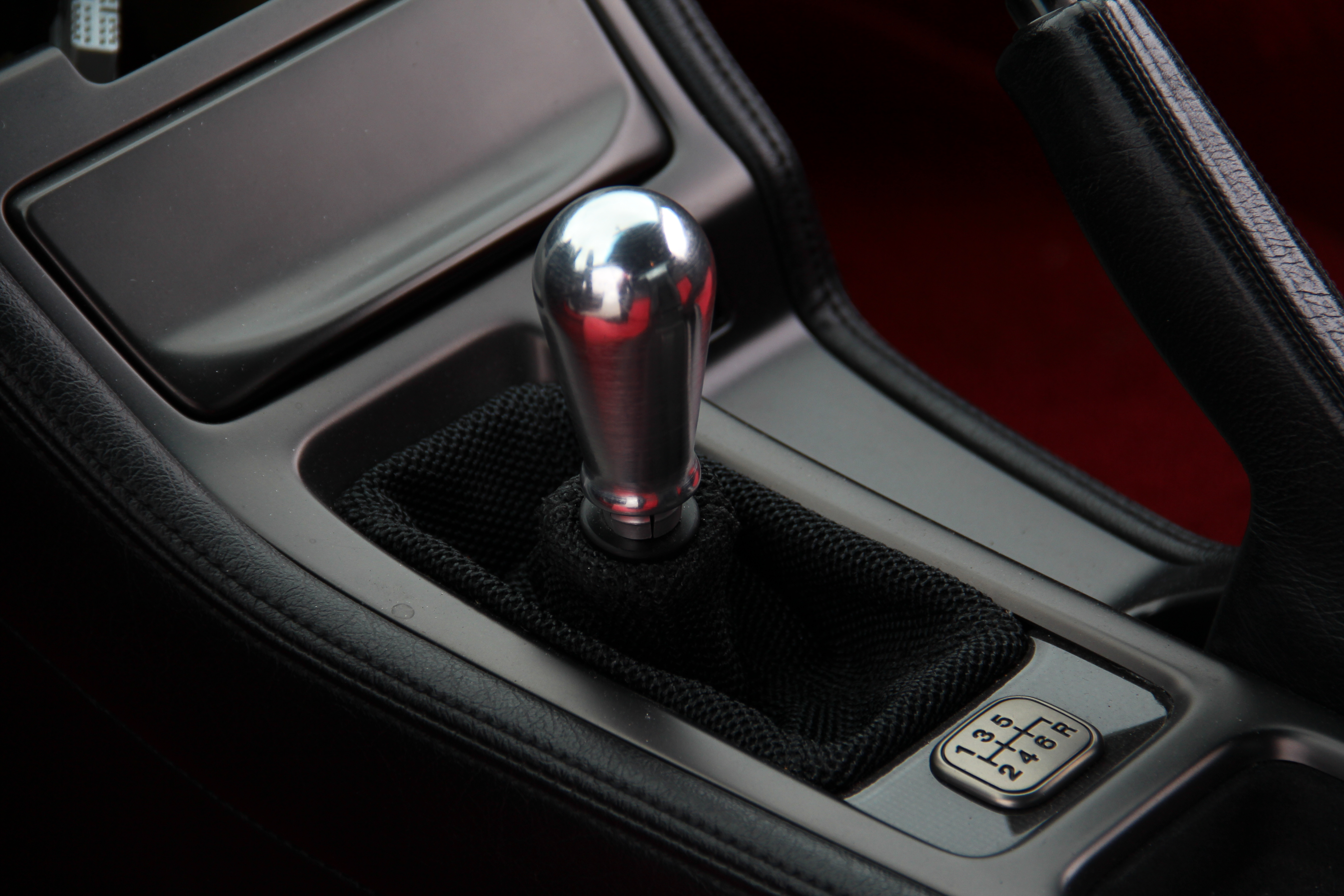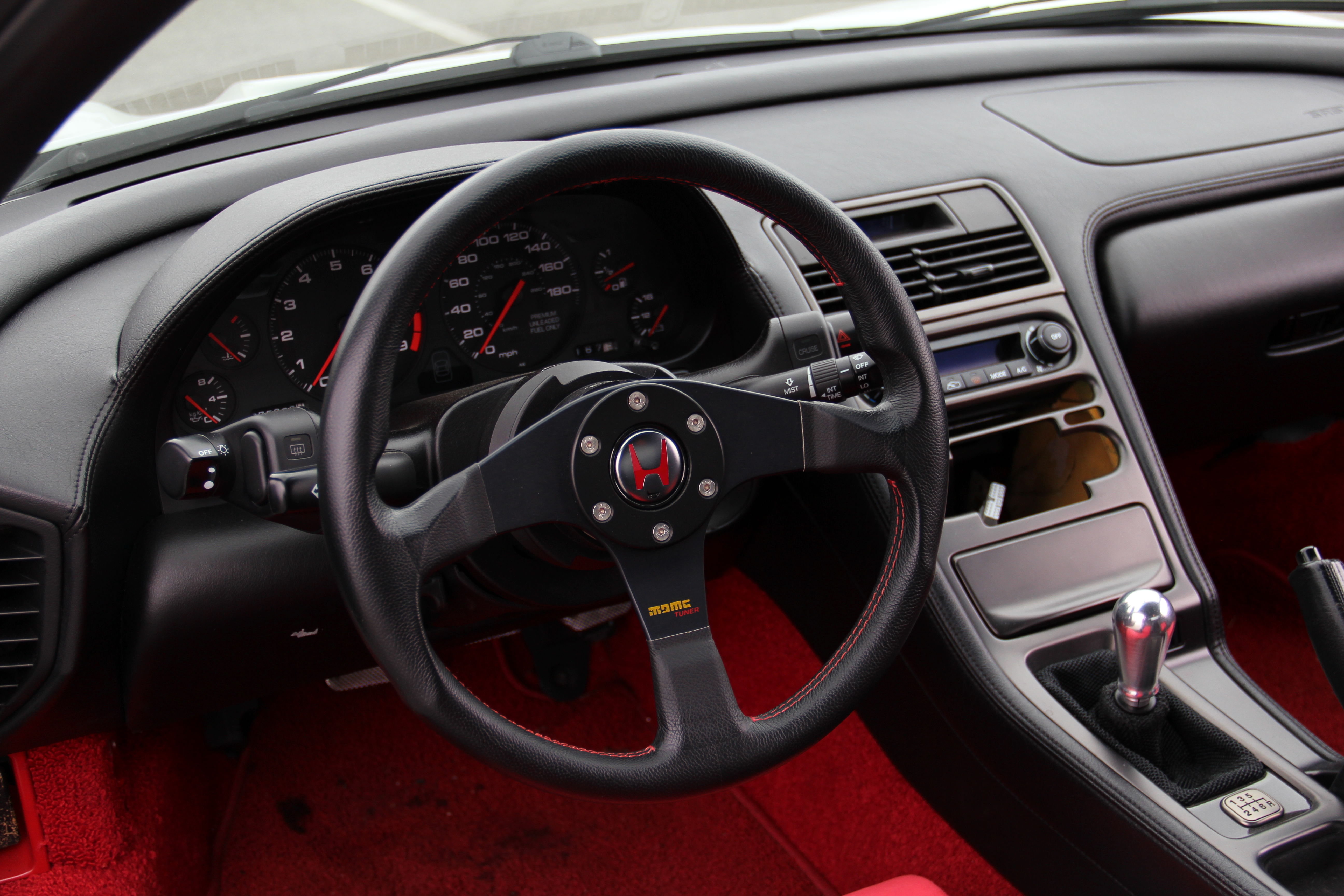My head is touching the targa top; my knees are inches away from the bottom of the Honda-badged steering wheel, and my rear end feels like it’s stuck in a manhole — that’s how deep the black leather, red suede-trimmed bucket seat is.
Or, at least, that’s how it feels as the supercar aura of the NSX is messing with my head. As it does, my mind begins to race towards worst-case scenarios. I think about how much my friend’s car might be worth now, given the rising prices of 90s Japanese supercars, and if his insurance company would still pay out if I was the one who crashed it. I catch myself spiraling down into this negative thought loop, break it, and remember the words of my therapist: breathe in peace, breathe out calm.
A bit more focused now, but still full of the nervous energy that comes with this kind of responsibility, I realize I have to locate the pedals before crashing would become possible. I feel around in the pedal box with my Nikes, and what I discover is more cause for alarm: the clutch, brake, and gas pedal seem to be almost touching each other, and all of them are slightly offset to the right. I am reminded of that YouTube video of Ayrton Senna test driving an NSX-R around Suzuka, executing perfect heel-toe downshifts in his brown loafers.
I forget about Ayrton’s brown loafers for a bit and decide to take some mental notes about the interior design of the NSX. The first thing I notice is the layout of the driver’s side door panel controls, which integrate two narrow, vertically stacked A/C vents at the top of it. I also notice that the instrument cluster is positioned so close to the left A-pillar that there is no room for A/C vents there: this means you sit almost flush with the door. Add to that the low height and downward slope of the door panel controls, and you really feel how close to the ground the NSX sits.
Besides the “D”-shaped interior door handles, the funky looking cruise control stalk, and the fact that the center console and door panel controls sit at an angle, everything else is reassuringly similar to what you’d find on any other Honda from that era. The familiar black, hard plastics and simple instrument cluster dials create this nostalgic 90s retro feeling, almost as if I’m not actually in a car, but some kind of ultra-realistic NSX driving simulator game from two decades ago.
Except this isn’t a game, and there are no continues in real life, so I make absolutely sure I can see out the rearview and sideview mirrors before I go anywhere. The steeply angled rear hatch glass means I’m looking through a mail-slot sized viewport when scanning directly behind me, but I feel I have fairly decent overall rearward visibility, miraculous given how low the NSX is. I figure I’m not going to spend much time looking for incoming junk mail anyway, given how picturesque the scene is out the front canopy.
The NSX has one of the best views I’ve ever seen through the front windshield of a car, due to some clever engineering from Honda. By making the cowl section lower, they were able to subsequently lower the height of the dash and instrument panel, creating better vertical visibility. For the NSX owner this means an almost panoramic view out of the cockpit, and a sense of being very in-tune with the outside world when the windows are down.
And that’s perfect because I want to hear every single bit of noise coming from the 3.2-liter V6, now fully warmed up and at the beck-and-call of my right foot. The throttle response is so crisp and linear that every jab and release of the gas pedal creates a different pitch of noise from the modified exhaust. As I get deeper and deeper into the throttle, I start to hear the trademark Honda intake howl, and eventually when I hit the VTEC crossover point, it crescendos into a rapid blare of induction noise: I call it the VTEC trombone.
The VTEC trombone, aka the C32B, unlike many 4-cylinder VTEC engines, has the bite to back up its bark. Even by today’s standard, it’s fast. The pulling power of 2nd and 3rd gear near redline feels like at least 300hp; it’s more than enough to send the average owner, or “hot shot automotive blogger,” into trouble very quickly, and by that measure it’d be misleading to say its underpowered.
It takes a little getting used to the relationship between the shifter and clutch. I’m pretty sure it’s an aftermarket clutch because you have to put some leg into it. Before I can start ripping off redline gear changes, I’ll need some seat time, because with 6-speeds, plus reverse, and such a physically small shifter box, it’s hard to tell whether I’m actually going into 3rd or 5th gear sometimes.
With some miles under my belt, I’m feeling a bit more comfortable with the NSX, but it’s just too valuable to take any real risks with. I stay mostly on flat, straight surface streets and saw the wheel back and forth to try and get some feedback from the chassis. As expected, the NSX delivers great road feel. But, because I’m sitting so low to the ground, that feeling is magnified. It feels like all four tires are sending feedback through the floor directly into the driver’s seat, creating a sensation you don’t often get in a road vehicle. This kind of tactile overload is usually reserved for karts and purpose-built racing cars.
I spend the last part of my test drive analyzing the NSX’s behavior under hard braking. I’ll dig into the throttle for a few seconds to build some speed, then quickly jump on the brakes, noting the ample amount of feedback the braking system provides. The pedal isn’t as firm as I’d like, but the brakes consistently haul the car down from speed repeatedly. I never reach the point of threshold braking. If I were to, I’m confident the 20+ year-old example I was driving would have no trouble if asked.
As I bring the NSX back to my friend’s house, I can’t help but feel sad about not being able to really put it through its paces like I’d be able to at a dedicated circuit—something that’s still near the top of my automotive bucket list. But reflecting back on that engrossing Sunday afternoon joyride, in which I received unrestricted access to what many argue is the most complete exotic car ever made, I felt a sense of emotional fulfillment. I felt good because I got to do something that carries heavy weight in my life, and that is getting to drive a car I grew up dreaming about, and still dream about.


